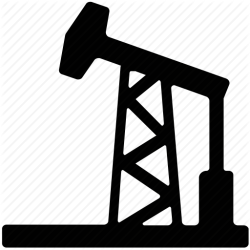Implications on society
There is an increasing concern for alternate source of fuel mainly because of the environmental impacts of hydrocarbon exploration, production and usage. Global warming and marine pollution top the list. However, the efforts and achievements of the industry over the years towards safer operations and greener environment seem to be lackluster. It is argued here that the dependence of man and society on hydrocarbon goes beyond just burning hydrocarbon for fuel but also cuts across hydrocarbon usage in various aspects of our social, technological and medical lives. However, there is a need for a balance between exploration and production of hydrocarbon and environmental integrity and this is possible only only if parties involved step up synergy towards a safer operation.
In this section, we will analyse the positive and negative impacts of petroleum and natural gas.
Positive Implications :
Petroleum has various benefits to the society as we all know.
- Economic drive of society: Petroleum (also called crude oil) is the most traded commodity in the international market and economic drive of many countries. Apart from its primary use as a source of energy, crude oil is considered the mother of all commodities because it is an important raw material for wide varieties of materials. Crude oil normally co-exists with natural gas in the underground reservoirs at high pressure and temperature. When the crud arrives at the surface, and after refining, it yields variety of products in gaseous, liquid, and highly viscous states. These products are normally referred to as petroleum products such as natural gases, gasoline, kerosene, naphthalene, lubricants, asphalts, etc.

Image obtained from: https://en.wikipedia.org/wiki/Petroleum_product
- A source of important natural gases: Natural gas is a potential source of hydrogen, carbon monoxidehydrogen, formaldehyde, acetylene and other important gases used all over the world in our homes as cooking gases and fuel for room heaters, in the industries as source of fuel for machinery and equipment, and in the hospitals for treatment etc.

Image obtained from: http://www.oilgasmonitor.com/monetization-natural-gas/
- Petrochemical industry: Petroleum is a source of raw materials for the wide variety of chemicals available today.
– It is a major source of benzene and benzene is a source of many important chemical compounds such as toluene, phenol (used to make resins and adhesives), aniline, naphthalene, styrene (used to make polymers and plastics) and anthracene. Small quantity of benzene is used to manufacture drugs, rubbers, lubricants, detergents, dyes, explosives, pesticides and napalm.
– Alkenes/Olefins are other components of crude oil that is widely used in the petrochemical industry. Their hydration and oxygenation yield alcohol and important group of solvents. Polymerization of alkenes also yields plastics (polypropylene and polyethylene) which are of high industrial value . Ethylene reacts with hypochlorous acids to yield chlorohydrin (a chemical used in the production of non-freezing explosives). Hydrolysis of chlorohydrin yields Ethylene oxide-a useful insecticide.
- Electricity generation: The main sources or fuel for electricity generation are hydro, coal, nuclear, wind, oil, and natural gas.As of 2010, natural gas constitutes 20.9% (the second largest after coal and peat which constitute 41.6%) source of world electricity while Oil constitutes 5.6 % making total petroleum contribution to electricity generation 26.4%. In its revised estimates in 2012, natural gas contribution to electricity generation increased to 21.4% while coal/peat reduced to 40.5% and oil also dropped to 5.1%. It therefore appears that the percentage share of natural gas in electricity generation would increase with time.

Image obtained from: http://theearthproject.com/fossil-fuels-bad-environment/
- Mechanized farming: Agriculture productivity has significantly increased since the 1940s due to the use of diesel engine tractors to cultivate, harvest and process farm produce. Also mechanized farming (fueled by fossil fuel mainly gasoline or diesel) allows the farmers to produce large food stuff much easier than 50 years ago. Gasoline fueled trucks have also been used to transport food products to the markets across cities, nations and continents.

Image obtained from: http://www.globalspec.com/learnmore/specialized_industrial_products/agricultural_farming_products_services_equipment
- Petroleum mulches: The use of bituminous oil fractions to prevent soil erosion is an old agricultural practice. They have also been used as a sealants/impervious coatings to direct water runoffs to selected areas (in watershed). They are also applied to soil to give it the favourable moisture and temperature needed to promote plant early growth. Petroleum mulch were successfully applied to many crops in many countries around the world and increased yields were observed.
- Space exploration: Kerosene has been used as rocket propellant for many years.
- Agriculture: Crude oil is widely used in making herbicides and fertilizers.
- Construction: Asphalt (also called bitumen) is a heavy residue of petroleum distillation. It is largely used in road construction where it is used as glue mixed with aggregate particles to form asphalt concrete. It is used to construct motor way, airport runway, streets, parking lots, sports area, canal linings, reservoirs, and in coastal protection.
Negative Implications :
- Like coal, fossil fuels such as crude oil and natural gas are nonrenewable sources of energy. As the demand for cheap energy continues to surge, crude oil and natural gas extraction rates outstrip renewal rates. With the outstanding fossil fuels supply falling exponentially, countries such as Singapore are forced to look for more sustainable sources of energy to ensure sufficient amounts are left for the future generations.

Image obtained from: https://www.pinterest.com/alexiaf245/natural-resources/
- Despite petroleum being an essential good, there are many pitfalls to its extraction process. With carbon comprising 85% of the hydrocarbons in petroleum, over-extraction of this fossil fuel leads to higher amounts of carbon released into the atmosphere, causing more heat to be absorbed and retained on Earth. This explains the rising trend in global temperatures.
- In addition, the combustion of gasoline, which is made from petroleum, is particularly damaging to the environment. Every 3.8 liters (1 gallon) of ethanol-free gas that is combusted in a car’s engine releases about 9 kilograms (20 pounds) of carbon dioxide into the environment.Diesel fuel releases about 10 kilograms (22 pounds) of carbon dioxide, while biodiesel (diesel with 10% biofuel) emits about 9 kilograms (20 pounds). Furthermore, gasoline and diesel emit toxic compounds which directly pollute the atmosphere.

Image obtained from: http://www.chemistryland.com/CHM130W/LabHelp/Experiment4/Exp4.html
- Offshore drilling :
A massive oil platform in the Gulf of Mexico, the Deepwater Horizon, exploded in 2010. This was the largest accidental marine oil spill in history. Eleven platform workers died, and more than 4 million barrels of oil gushed into the Gulf of Mexico. More than 40,000 barrels flowed into the ocean every day. Eight national parks were threatened, the economies of communities along the Gulf Coast were threatened as the tourism and fishing industries declined, more than 6,000 animals died, coral colonies declined.
Image obtained from: https://media1.britannica.com/eb-media/35/143335-004-A4A90E40.jpg
– Scientists estimate the habitats on the bottom of the Gulf could take anywhere from multiple decades to hundreds of years to fully recover.
– A significant portion of the Gulf floor was affected by oil. The federal study confirmed that at least 770 square miles around the wellhead were affected, while a separate analysis determined that at least 1,200 square miles were affected. Both studies suggested that a significant amount of oil was likely deposited on the ocean floor outside the areas of known damage.
– In terms of coastal habitats, in Louisiana, erosion rates approximately doubled along roughly 100 miles of shoreline. The effect lasted for at least three years. Louisiana already had one of the highest rates of wetlands erosion, even before the disaster. Oil and response efforts killed as many as 8.3 billion oysters. These losses have put the sustainability of oysters in the Gulf of Mexico at risk.


